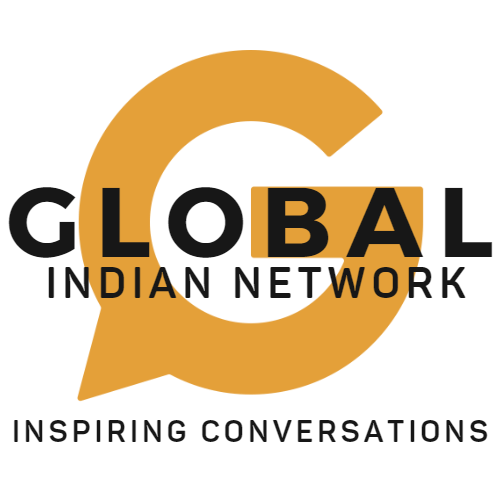Mastering productivity requires a combination of discipline, planning, and the application of healthy habits into daily life. A practical to-do list and strategic use of productivity tips while focusing on personal well-being and professional growth are all necessary to boost productivity in everyday life. Building such habits allows individuals to boost productivity levels and effectively align personal and professional goals. From refining time management skills to staying committed to daily priorities, the small steps you take every day can make a huge impact.
This article explores the key elements of productivity, including the importance of a solid daily routine, leveraging digital tools, and balancing personal and professional life to ensure sustainable and impactful productivity.
Table of Contents
Tips to Boost Productivity in Everyday Life
Building a Powerful Daily Routine
A powerful daily routine lays the foundation for consistent productivity in everyday life. Begin your day with a well-structured morning routine, such as enjoying a cup of coffee or following a 15-minute meditation and/or physical exercise routine, which are all useful. Creating a to-do list is central to this process. It acts as a guide for organizing daily tasks, organizing simple tasks while breaking down complex tasks and demanding tasks into manageable steps for time efficiency.
Regular breaks within your daily routine are crucial to maintaining mental energy and focus. Break time allows you to recharge and improves your ability to tackle tasks on your to-do list. Incorporating distraction lists and distraction capture lists into your planning further ensures that your focus remains sharp, especially when working on challenging tasks.
Your daily routine should also prioritize healthy habits, such as drinking a glass of water to stay hydrated and maintaining consistent energy levels throughout the day. By monitoring your stress levels and integrating moments for relaxation, you can optimize your productivity while enhancing your well-being. Planning using a daily priority list and keeping track of list items ensures that no part of your to-do list is overlooked.
Incorporating accountability partners into your daily routine can further refine your habits. These partners can review your progress, encourage consistency, and help ensure that extra breaks or schedule adjustments remain beneficial. While the concept of an endless list is useful for idea generation, it should be paired with prioritization strategies to focus on tasks that offer the highest value. Overall, the key to a productive daily routine lies in balancing structure with flexibility and ensuring that regular breaks support consistent effort and focus.

Leveraging Digital Tools for Efficiency
In the modern age, digital tools provide powerful solutions for enhancing productivity and managing workloads. Productivity apps and project management software are indispensable in organizing and executing tasks effectively. You can stay focused and meet deadlines without feeling overwhelmed by assigning specific time slots for each item on your to-do list.
Project management tools are particularly valuable for larger projects and tasks requiring coordination across teams. They simplify planning, streamline workflows, and ensure that no detail is overlooked. Using distraction capture lists and digital trackers further enhances focus, helping you overcome challenges in productivity. From smaller list items to major project agenda topics, these tools provide the structure needed to handle complex tasks with confidence.
Investing in online classroom training or exploring blog posts on productivity techniques can also improve your skills. For example, the methods shared by David Allen and Warren Buffett demonstrate how simple changes in workflow and mindset can yield significant gains in productivity levels. Integrating economic productivity strategies into your daily schedule allows you to maintain professional success and manage even the busiest calendar efficiently.
Additionally, productivity apps enable efficient work habits by automating repetitive tasks and offering insights into time management. Whether handling simple tasks or tackling larger projects, the right digital tools ensure your efforts are aligned with long-term goals. They also provide metrics to measure the impact of your work and refine your approach for continuous improvement.
Balancing Personal and Professional Life
Balancing personal and professional life is vital to achieving sustainable productivity. This balance begins with recognizing the interconnected nature of these domains. Maintaining personal productivity allows you to approach professional responsibilities with greater focus and energy. Strategies such as setting boundaries, using a to-don’t list, and allocating investment time help you strike this balance effectively.
Monitor your stress levels and mental health regularly. Practices such as taking extra breaks, sipping a cup of coffee, or spending treasured time with loved ones can reduce stress and enhance overall well-being. Simple acts like drinking a glass of water or practicing mindfulness during break time can significantly boost mental energy and improve your ability to concentrate.
Emulating the habits of successful individuals like Warren Buffett or following the insights of productivity experts such as David Allen can help you align your personal life and professional responsibilities. For example, Buffett emphasizes the value of focus and prioritization, while Allen provides actionable advice for streamlining workflows.
By optimizing your schedule and avoiding the pitfalls of toxic productivity, you can foster a healthy relationship between work and personal commitments. The labor productivity formula is one approach to measure and refine productivity while ensuring that levels of time allocated to various tasks are balanced. This formula can guide decisions about how to best spend your investment time, ensuring that every effort contributes to long-term success.
Creating productive habits is key to maintaining this balance. Activities such as monitoring energy levels, reducing distractions, and focusing on impactful tasks support both personal growth and professional achievements. You can effectively bridge the gap between personal and professional goals with consistent effort and a willingness to adapt.
Conclusion
Mastering productivity in everyday life involves consistency, balance, and leveraging the right strategies and tools. A strong daily routine, built around actionable habits like maintaining a to-do list and practicing regular breaks, provides the foundation for sustained productivity. Incorporating healthy habits such as drinking a glass of water, monitoring stress levels, and staying committed to impactful tasks ensures that your efforts remain focused and effective.
Digital tools such as productivity apps and project management software offer valuable solutions for organizing workloads and overcoming challenges in productivity. By allocating specific time slots and focusing on list items, these tools help streamline workflows and enhance efficiency. Investing in training sessions or exploring resources like blog posts further refines your approach to productivity.
Balancing personal and professional life requires a commitment to maintaining mental energy and monitoring stress levels. Strategies such as creating a to-don’t list, practicing regular breaks, and following insights from productivity experts ensure that your efforts align with long-term goals. Emulating successful individuals and focusing on investment time further enhances your ability to manage responsibilities effectively.
With these principles in place, productivity becomes not just a series of tasks but a way of life. Integrating daily routines, leveraging digital tools, and finding harmony between personal and professional commitments allow you to reach your full potential while maintaining balance and well-being.

FAQs
How can a to-do list improve productivity?
A to-do list organizes your tasks, allowing you to prioritize daily schedules and minimize distractions. It ensures that even complex tasks are handled effectively.
Why are regular breaks important?
Regular breaks improve mental energy, reduce burnout, and enhance focus. Scheduling break time is essential for maintaining balance and consistent productivity.
What role do digital tools play in productivity?
Digital tools like productivity apps and project management software simplify planning and execution. They help overcome challenges in productivity and improve efficiency across daily tasks.









